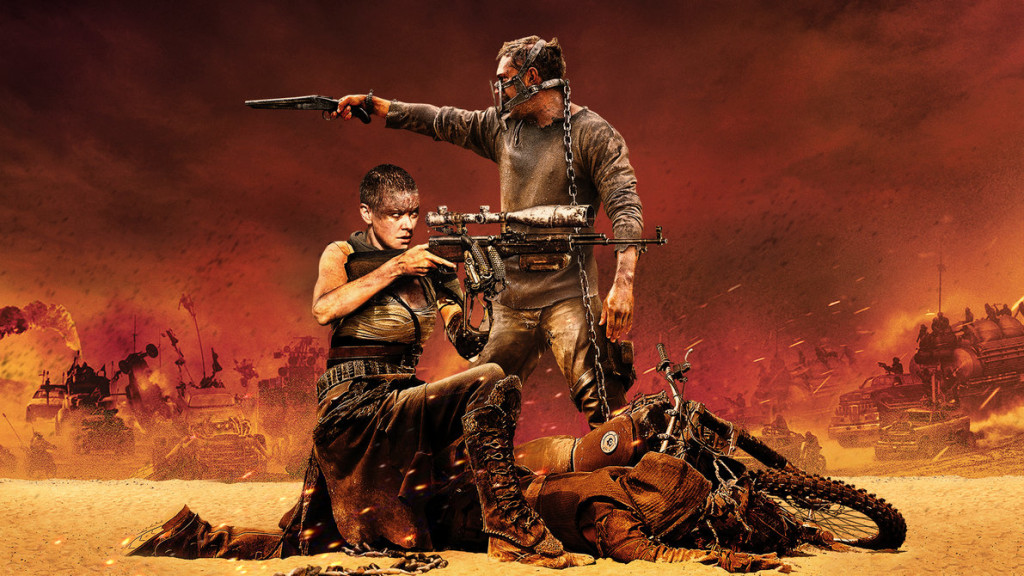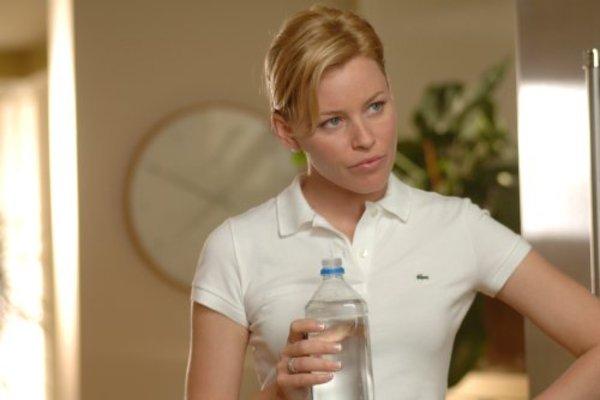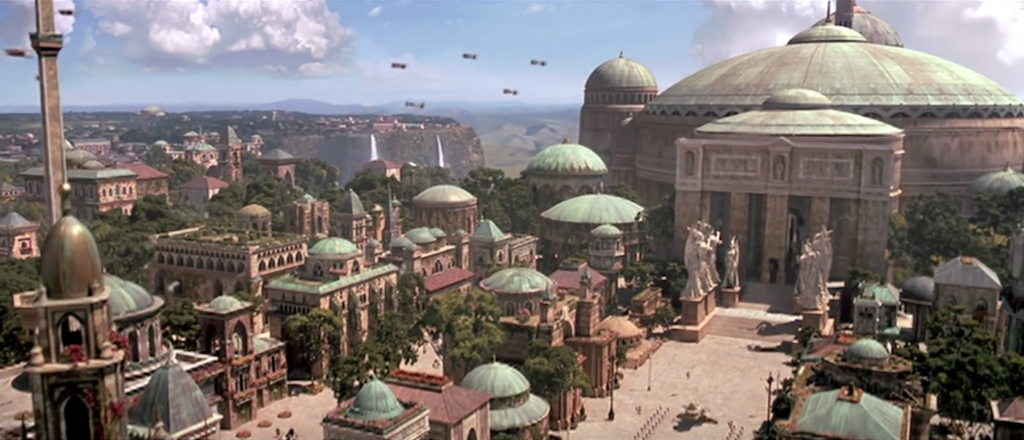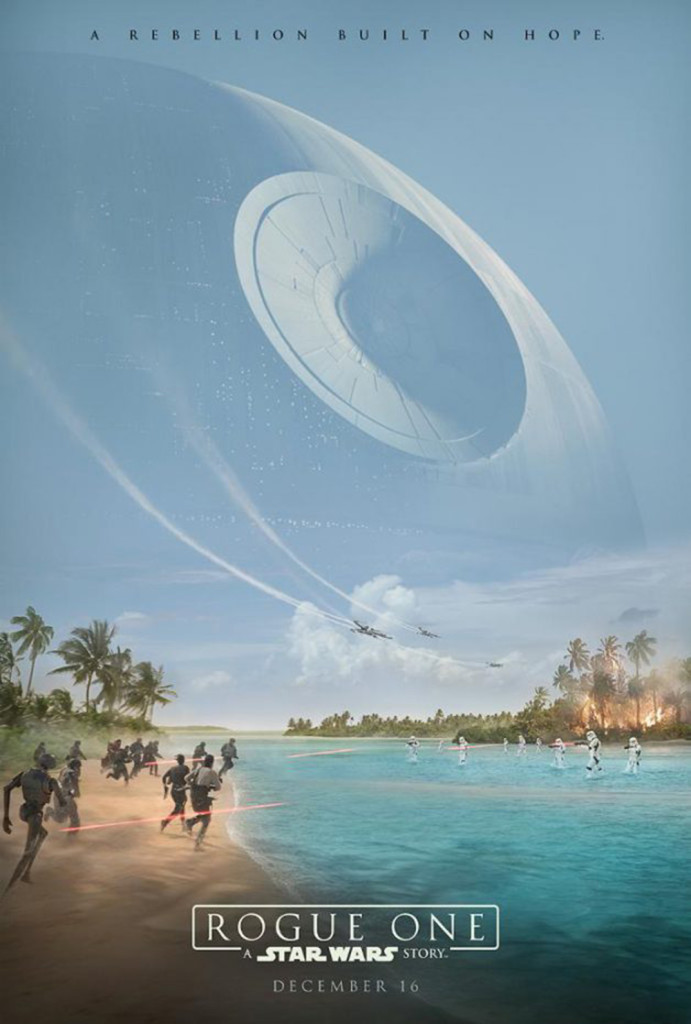Search Results for: F word
So in my most recent group of consultations, I got this question a lot: “What about my dialogue?”
I remember when I first got into screenwriting, I came across an interview where a professional screenwriter was asked, “How do you write good dialogue?” His answer: “Dialogue is the least important part of a screenplay. Learn everything else first.”
I subsequently discarded this screenwriter as insane, refused to watch any of his movies, and wrote a handful of e-mails to him explaining everything that was wrong about his proclamation that I never sent. But over time, I realized there was some truth to his statement. I mean how else do you explain writers rewriting dialogue the day of shooting a scene and coming up with something perfectly suitable?
What you eventually learn is that it’s the structure of the scene that enables the potential for good dialogue. Good dialogue rarely emerges on its own. For example, if a director came to you with a structure-less scene and said, “I need new dialogue here,” you’d be fucked. You could try and write some clever Quentin Tarantino shit with some Diablo Cody witticisms and a Paul Thomas Anderson monologue about milkshakes. But no matter what you did, it would be a mess.
However, if the director came to you and said, “Here’s the scene. This wife is about to cheat on her husband, and while he doesn’t know that yet, he’s suspicious of her recent behavior. This is their phone call. I need you to rewrite the dialogue,” now you have something to work with. You have some underlying tension in the scene. You have subtext. You have conflict.
With that setup, you could have a hundred screenwriters come in and write your dialogue and most of them would come up with something good. Why? Because there’s an underlying STRUCTURE to the scene that is built for dialogue. And that was the inspiration for today’s lesson. I wanted to look at the three big elements responsible for good dialogue.
Before we get to that, though, I want to make something clear. None of this will help if you don’t have the basics down. You can’t have a bunch of on-the-nose dialogue. You can’t have a bunch of melodramatic dialogue. The dialogue can’t be robotic. It’s got to sound like real people talking to one another. Ironically, there should be a slightly heightened quality to movie dialogue, yet not so heightened that you look like you’re showing off. And finally, like all of writing, there can’t be any laziness. Come up with a better word, a better sentence, a better analogy, a better turn-of-phrase. You have to try hard. When you’ve done all that, you’ll be ready for the below.
1) DIALOGUE FRIENDLY CHARACTERS
Last week a writer asked me, “Why does my dialogue suck in this scene?” I re-read the scene which took place between “the boring friend” and “the quiet guy.” In other words, of course the dialogue sucked. Neither of the characters was built for dialogue. If you want to write good dialogue scenes, you need characters who are good at talking. It’s no different than sending a couple of socially awkward introverts into a bar and telling them to pick up women. Their personalities aren’t built for that.
If you look at Pulp Fiction, one of the reasons the dialogue is so memorable is that the movie has a dozen characters who are dialogue-friendly. If you look at Deadpool, one of the reasons the dialogue rocked was because it starred the most dialogue friendly character of the year. Jokesters, anybody opinionated, motormouths, philosophical potheads, people who “just tell it like it is and if you don’t like it, fuck off,” really smart people who love to hear themselves talk, really dumb people who who love to hear themselves talk, weird people who have weird views of the world, idiots, the list goes on. If you want more good dialogue scenes, this is something you should be thinking about during the character creation stage. “Is this a character who’s going to say interesting things?” If you don’t have at least one of these guys, your dialogue is going to suffer.
2) CONTRAST
Many of the best dialogue scenes come from a contrasting dynamic. Two characters who are on different ends of the spectrum. Take one of the best dialogue movies ever – When Harry Met Sally. Harry was brash, opinionated and pessimistic. Sally was reserved, thoughtful, and optimistic. It was no wonder their dialogue was fun. Clementine and Joel in Eternal Sunshine. She was extroverted and a motor-mouth. He was introverted and chose his words carefully. 500 Days of Summer. He wanted to make it work badly and she didn’t. Silence of the Lambs. She was timid and scared. He was brilliant and manipulative.
What happens when you don’t have contrast? Let’s look at Mad Max: Fury Road. Great movie, right? But do you remember the dialogue? Did it stand out in any way? No, it didn’t. Why? Maybe the fact that Max and Furiosa were essentially the same person (alphas who did things their own way) contributed to the lack of interesting conversation. There wasn’t enough contrast in their dynamic. Not to mention, neither was dialogue-friendly. It should also be noted that “contrasting” can be momentary. It doesn’t have to be built into the characters from the get-go. For example, two characters who are similar may enter a situation where they disagree. In that case, the contrast is momentary, but it’s still contrast. It still enables the potential for good dialogue. With that said, it’s beneficial for your key characters to have a contrasting dynamic, since they’re going to be in the most scenes together. If they’re too similar or agreeable, you’ll have a lot of sub-par dialogue scenes.
3) THE NEGATIVE ELEMENT
Now this is a working theory so it’s not 100% there yet. But what I’ve found when I’ve broken dialogue down is that in almost every circumstance, the dialogue gets better when you introduce a NEGATIVE ELEMENT. The example I always like to use is a couple (NICK and LISA) talking at a diner. If all Nick and Lisa do is talk, that’s boring. But if we know that Lisa plans to dump (NEGATIVE ELEMENT) Nick at some point during the conversation, you now have interesting dialogue. And even if she dumps him at the start of the conversation (NEGATIVE ELEMENT) you’re going to have interesting dialogue.
Or maybe, for whatever reason, you want Nick and Lisa happy in the scene. That’s fine. But if you want to keep the dialogue interesting, you need to introduce the NEGATIVE ELEMENT somewhere else. For example, maybe Lisa’s abusive ex-boyfriend shows up (NEGATIVE ELEMENT) and sits a few tables away. I guarantee you the conversation between Nick and Lisa is going to get a lot more interesting, even if neither acknowledges that the ex has shown up.
Likewise, let’s say Nick’s just joined the army (I guess Lisa dumped him). If you write a scene where, when Nick gets to the base, he sits down with another soldier and the two discuss where he came from and how he got here, it’s going to be boring. But if the second Nick gets there, he’s thrown onto a Humvee to go check out an IED explosion, and the route they’re taking is laced with insurgents (NEGATIVE ELEMENT) and THAT’S when Nick is asked where he came from, the dialogue’s going to be a lot more interesting.
The negative element could also be subtle. Let’s say we’re following Nick and Lisa (he survived his tour of duty and they’re back together) to a concert. She’s been looking forward to this all week whereas he doesn’t want to be here (NEGATIVE ELEMENT). We’re more likely to get good dialogue out of that than if they’re both happy and excited to be here.
And it’s important to note that you have OPTIONS once the negative element’s been introduced. For example, Nick can be transparent about not wanting to be at the concert OR he can keep his feelings to himself. Either scenario will lead to some interesting dialogue. The idea is that a negative element creates conflict, and conflict necessitates resolution, or at least an attempt at resolution. So there’s more curiosity on the reader’s part on how this situation’s going to end.
Finally, just like there are characters who aren’t built for dialogue, there are genres and movie-types that aren’t built for dialogue. Dramas are one of them. You rarely come out of a straight drama going, “Wow, the dialogue in that was amazing.” It’s the same with Thrillers. Since they’re always on the move, you don’t have many long conversations. So it’s harder to write memorable dialogue.
For those types of movies, you want to place less focus on dialogue-friendly characters and contrasting dynamics and more on the NEGATIVE ELEMENT. As long as you’re introducing negative elements into your scenes, whether they be from the characters themselves or from outside forces, it should lead to better dialogue.
Negative Element Theory reminds me of Rashomon both in its simplicity and complexity. Feel free to comment on it, as well as offer your own dialogue tips, in the comments section.
Genre: Contained Thriller
Premise: A weekend tryst between two cheating spouses goes south when the husband of the woman finds out and makes them pay in the most unimaginable ways possible.
About: This one was acquired by 1984 Defense Contractors (“The Grey”) a couple of years ago. Before selling the script, the writer, Elliot San, wrote and acted in a comedy troupe in Muncie, Indiana.
Writer: Elliot San
Details: 96 pages
What caught my attention with this script was that it was said to be in the same vein as Hard Candy, the 2005 film about an older man who preys on a younger girl online, and when he brings her home, realizes that he’s the prey.
It was a good movie (Ellen Paige’s debut) and I realized that we haven’t had a good contained thriller in the vein of Hard Candy in forever. So let this be an official shout-out to those of you looking to sell a script, that this is the perfect sub-genre to write in.
It costs NOTHING to shoot. And it stands out from 90% of the other contained thrillers just by not being a horror script.
Assuming you go this route, You’ll Be The Death of Me is your competition. It’s already made a splash. I’m sure someone is out there trying to make it. Let’s see if it’s good enough to be the next Hard Candy.
40-something Holly seems to have a good life going for her. She’s got a husband, Russell, who loves her, and a daughter in college. Yet we get the sense that the recent uptick in Holly’s business trips is straining the marriage.
When Holly heads out on one of those trips, we learn that they’re more personal in nature than she’s letting on. As in, she’s been banging some pool boy for the past six months. And this particular getaway in Palm Springs is going to be the biggest and craziest sex-a-thon yet.
Oh, it’ll be big and crazy all right. Just not how she planned it. You see, Russell figured out what was going on. And instead of going the whole “lawyer up,” route, he’s going to have some fun at his wife’s and Everett’s expense.
He kidnaps Everett ahead of time, brings him to the hotel room, and tells him that his only job is to keep Holly in that room until tomorrow morning. If Holly leaves that room before then, Russell will kill Everett’s wife and daughter, who he’s holding hostage.
Russell then leaves, Holly never knowing he was there, and calls her, pretending to be back at home. He informs Holly that he knows she’s with Everett and that Everett is a killer. Holly, he believes, will be his next victim. Holly must get out of that room at all costs.
And hence begins a life-or-death game of both lovers attempting to outwit one another, unknowingly going up against a likewise manipulated foe. Who’s going to come out with their pants on? I can promise you this. You’ll have no idea unless you read the script.
I LOVED the way this script started. You guys should all read the opening of You’ll Be The Death of Me. It starts out by breaking the rules, giving us a dialogue scene (you rarely want to start with a straight dialogue scene) that takes place on the phone in a car (the characters engaging in the dialogue aren’t even together!). Can you ask for a scene that’s more designed to bore an audience?
Here’s why it works though.
SUBTEXT
Holly, who’s in the car, is talking to her husband, Russell, about seemingly unimportant things (their daughter’s college life, for example). As they continue talking, we get the sense that the conversation is boring Holly. Not in a normal husband-wife know-everything-about-each-other way. But that she has something else she’d rather focus on.
And what that does is it creates a question in the reader: “Why does she want to get off the phone with her husband so badly?”
Once you have the reader questioning the situation, you’ve got them hooked, at least temporarily. And San starts dropping more bait crumbs for us. Holly mentions her “conference” that she’s going to. Russell says, “I thought you said it wasn’t a conference.”
Okay, now we know Holly is lying. Why is she lying? Whether we like it or not, the writer has us in the palm of his hands. We want to know where this is going and that, my friends, is how you pen an opening scene that hooks the reader.
Once Holly gets to the hotel, we sense that something is off. Everett, the man she’s cheating with, isn’t around. He’s left messages with instructions for her instead. Something’s up. The suspense is building. We want to see what’s going to happen here because we know it’s probably going to be bad (pro tip: simple suspense is implying something bad is going to happen then suspending the outcome of that moment).
For the first 15 pages, I was so onboard with You’ll Be The Death of Me.
And then San makes a risky choice. He has Russell threaten Everett, secretly telling him that if Holly leaves that room before tomorrow morning, he will kill Everett’s family.
He then calls up Holly, and secretly tells her he knows she’s having an affair, and that Everett is a killer.
In the immortal words of Saturday Morning Cartoons: “WAH WAH WAHHHHHHH.”
First of all, if you’re a wife having an affair and your husband calls you while you’re with the other man and tells you he’s a killer, what’s your first response going to be? I’m assuming it’s something along the lines of “bullshit.” Your husband has every reason to want to get you away from this man or make you scared of him. So of course he’ll lie.
And this is something I’ve been trying to tell screenwriters forever, and something they don’t want to listen to: Before you have a character do something incredulous, ask yourself if this were the real world, would that character still do what you’re having them do?
If the answer is no, readers are going to call bullshit on you. Russell is written as a smart man. A real life smart man isn’t going to try and pull something over on a wife that she would never believe. And likewise, a real-life wife would never believe that thing even if her husband was dumb enough to try it.
Unfortunately, when a mistake like this is built into the conceit, it disqualifies everything that happens after it. If we don’t believe in how we got here, we can’t believe in what follows.
But here’s the thing about You’ll Be The Death of Me. It adds ANOTHER twist that throws everything you thought you knew out the window. It becomes a completely different story.
And I’ll be the first to admit, despite the thousands of screenplays I’ve read, I had NO FUCKING CLUE what was going on. I couldn’t venture a guess at who was pulling the strings if you gave me temporary access to Einstein’s brain.
Now was the script perfectly constructed? It was not. But it takes chances and after it hits that midpoint, it always stays ahead of you. It’s enough to keep you entertained, that’s for sure.
The contained relationship thriller is like a secret weapon sub-genre. Not many people write them, so the competition is minimal, they’re cheap to make, since they’re one location, and they’re easy to market, so producers want them. It’s the trifecta! So if you’ve got a good idea for a contained relationship thriller, the market is due for one. Take advantage!
[ ] What the hell did I just read?
[ ] wasn’t for me
[x] worth the read
[ ] impressive
[ ] genius
What I learned: Be careful with scripts where there’s no one to root for. They can still work as thrillers because the audience is there for the thrills as much as they are the characters. But in You’ll Be The Death of Me, you have a cheating wife, a cheating husband, and a man who’s torturing them. Who do we root for in that scenario? Even if we’re left thrilled by the breakneck pace and clever plotting, we feel empty at the finish line because we never had anyone to latch onto. So if you’re going to write one of these films, try and add someone to root for!
Genre: Dark Comedy
Premise: A high school soccer star’s life is turned upside-down when a relationship with a teacher makes him question his life after graduation.
About: This is a good example of what a widely-read well-liked script around town can do for you. After this made the rounds, the writer, Zander Lehmann, pretty much a neophyte, was able to set “Casual” up at Hulu, which turned out to be their big breakout show. Outside of that, Zander wrote one episode of The Shannara Chronicles for MTV.
Writer: Zander Lehmann
Details: 106 pages (1/21/13 draft – rewrite).
The Unicorn Store has reinvigorated my thirst for good indie scripts. In my experience, most writers who write indie scripts see “indie” as permission to be boring – a built-in excuse to write entire acts that take place inside greenhouses where your deaf goth hero contemplates suicide as he examines each individual flower.
The truth is, writing an indie movie isn’t that different from writing a Hollywood movie. All the scenes still have to move the story forward. You need high stakes. There’s got to be some urgency. If you think writing an “indie” script is a license to fuck around, expect a lot of frustrated readers who come back with a couple of vague compliments and a pool-sized list of excuses when you ask them to read “the new draft.”
The Beautiful Game follows four characters. There’s Matt, a senior high school soccer star who’s about to get a scholarship to the college of his dreams. There’s Elaine, the girl who he recently broke up who adds new meaning to the phrase, “All is fair in love and war.”
There’s Dr. Astle, a school counselor who’s failed at everything in life except for this. Dr. Astle cares about his students more than anything, but it’s also widely believed that he’s in the closet and afraid to come out. Dr. Astle is constantly pursuing Neve, a 32 year old teacher who coaches the girls junior varsity soccer team and hates every minute of it, preferring instead to toke up whenever possible.
We follow each character’s narrative through their own inner monologues, allowing us to feel much closer to them than we normally would in a high school movie. One day, when Neve’s car doesn’t start, she gets a ride from a passing Matt, ends up inviting him into her apartment, and you can guess what happens next.
The problem? Matt falls in love with her. So while that’s going on, Elaine does everything in her power to get Matt back. Dr. Astle does everything in his power to get Neve to go out with him. And Neve has to figure out if Matt is a mid-life crush or someone she can really see herself with. All of this comes to an explosive conclusion during the beautiful championship game climax.
The Unicorn Store reminded me of the importance of “dressing up” an indie script. You have to understand that indie scripts that deal with relationships and suicide and feelings and backstory and that have NO HOOK are impossible sells. The only producers you can rope into making these movies are producers who have never produced before. All the producers who have made one of these films learned their lesson and will never make them again.
I’m telling you. When you spend four years of blood, sweat, and tears, only for your film to show up on iTunes “special finds” list for one week and then forgotten about forever, you stop seeking out concept-less films.
Scripts like The Unicorn Store, which add a unique hook to things, allow you to have the best of both worlds. You get to explore a bunch of indie themes, yet do so inside a concept that will get attention. If you don’t have that weird hook, you’re running up No Chance Avenue. There is one exception to this rule however: YOU’RE A REALLY GOOD FUCKING WRITER.
Zander Lehmann is a really good fucking writer. No, he’s not going to dazzle you with any word-smithing like Diablo Cody, or give you some unforgettable Tarantino-esque scene like plunging a shot of adrenaline into an overdosed mobster’s wife’s heart. But he’s got an offbeat voice, he takes chances, he makes interesting plot choices, his character-writing is top notch, he surprises you without being gimmicky, and he knows how to tell a story.
That last one may seem generic but it’s the most important of the bunch. I can’t express how big of a requirement the ability to tell a story is, and how many scripts I read – even professional ones – where the writer doesn’t know what that entails.
They don’t use GSU, they don’t use suspense, mystery, dramatic irony, a 3-act structure. And if they do know how to do all of those things, they often do it in a forced manner, following a list of checkboxes some screenwriting book told them to follow instead of making story choices naturally.
This is a part of screenwriting I don’t talk about enough. How does one “follow the rules” yet keep their story natural? It’s like learning any new skill. When I taught tennis, I would have to break down a forehand to a new student in minute detail to help them hit it the correct way. For six months to up to two years, they’d be thinking about all those movements as they hit the forehead. So even though the forehand was technically correct, it looked stiff, mechanical, and the ball didn’t pop off the racket effortlessly.
But once they got it logged into their muscle memory and they didn’t have to think about it anymore, it became this thing of effortless beauty. Writing is the same way. You have to go through all the dirty hard work of THINKING about the rules as you’re applying them. But once it’s ingrained in you, you can start focusing on making the best choices for the story, even if those don’t fall within the boundaries you’ve been taught to stay within. It’s okay because, now, you know that even if you leave the reservation, you have the skills to find your way back.
As with all indie scripts, their success depends on the creation of interesting complex characters. Unlike big Hollywood movies where character depth boils down to an easy-to-define flaw and some bare-bones backstory, the characters in indie scripts are your special effects. You can see how good of a writer Lehmann is through his creation of Dr. Astle. Here’s a character who’s gay yet who spends the entire movie pursuing our female lead.
This is way trickier to pull off than you know, and speaks loads about Lehmann’s skill level. See, he knows that the more you can tie the characters together, the more compelling the story is going to be. If Astle is off on an island, not involved with anyone else, he becomes less interesting. So Lehmann writes in the one-sided romance of Astle pursuing Neve. The problem is, Astle is gay. So how do you make that work? Lehmann’s solution is to place Astle in the closet, so he’s not quite out yet, and he makes Neve a pursuit of denial. She’s Astle’s way of not confronting his sexuality more so than a genuine love interest.
There isn’t an amateur writer in the world, and very few professionals for that matter, who could’ve walked that line and pulled this off. But Lehmann does it.
There’s only one problem with the script, and it’s the reason it only gets a double worth the read as opposed to an impressive. It’s too inspired by Election. You have the high school setting, the multiple voice overs, a student with a teacher. The script eventually evolves into a completely different story than Election. But you can’t deny the initial similarities. We always subconsciously copy our favorite movies, guys. You have to be on the lookout for that.
If you’re interested AT ALL in writing good indie material or a dark comedy, you’ll want to read The Beautiful Game right away. This is really good stuff.
[ ] What the hell did I just read?
[ ] wasn’t for me
[xx] worth the read
[ ] impressive
[ ] genius
What I learned: You have more leniency to delve into backstory in indie scripts. The audience is expecting more character development, so you can slow down in places if it offers us an opportunity to get to know a character better (as long as what we learn is interesting!). Lehmann goes into an entire flashback montage to show how Dr. Astle ended up at this school. Be wary of this approach in big Hollywood movies though.
What I learned 2: I read a lot of these student-teacher dark comedy scripts. They seem to always make the Black List. But now that the female and male student versions of these stories are so ubiquitous, I think someone has to write the gay version of this setup. Where either a female student engages with a female teacher or a male a male. That’s the only fresh version of this setup left.
I am borderline furious about this new Star Wars trailer. Even more furious than when I try and understand Snapchat.
Something’s going on behind the scenes, and while I don’t claim to have direct knowledge of what that is, little bread crumbs have been dropped onto the internet over the past year, enough so that you can almost put the loaf back together.
People who like this trailer have been tricked by the familiar and the cool – Darth Vader, rocket launchers taking down AT-ATs, robot sidekicks. Like a great magician who’s mastered sleight-of-hand, they’ve got us looking in the wrong direction.
But seriously, what the hell is happening in this trailer??? It’s a complete mess. For starters, you have a freaking PREQUELS shot to open things.
And let me tell you why this is a bad sign. Gareth Edwards does not want to make a Prequels film. Everything he’s told us indicates he wants real locations, a real-world feel, and to make this as real and gritty as a Star Wars movie can be. A CGI prequels shot tells me someone besides Edwards ordered that shot in there.
Then, to follow that, we have a second look at the city with the now ubiquitous “Star Destroyer nearby to add gravitas” shot. Where else have we seen this shot? Oh yeah, The Force Awakens trailer.
The subtext here is clear as day. These shots are Disney-ordered. This is them wanting to juice up what they believe is a movie that needs juicing up (more on that in a bit).
Now, unlike a first trailer, which is about mystery and creating buzz, the second trailer is supposed to tell us what the story is. This trailer starts to do that, with us learning that Jyn is going to lead some mission. But then descends into a hodge-podge “sort-of look for the rest of the gang” montage that feels either rushed or awaiting a bunch of shots that aren’t ready yet since half the movie was reshot a few weeks ago. They introduce us to Sword Guy and that’s about it.
Most egregiously, the longer the trailer goes on, the more un-fun it gets. Not “gritty,” not “dark,” but un-fun.
So here’s my suspicion. Gareth Edwards made a boring movie and they’re trying to figure out how to un-boring it. Watch the trailer again and focus on the acting. What jumps out at you? The answer is nothing. Nothing jumps out at you because every character is boring as shit save for, maybe, Forest Whitaker, and that’s only because he’s an awesome actor.
This is the director’s choice to mute characters, to keep all of their line-readings subdued, and it’s what doomed directors like M. Night. In a movie, just like in a script, you need VARIETY IN CHARACTER, as that leads to CONTRAST, which leads to exciting scenes. Here we’re treated to crackling interactions such as this one: (glumly) “I want to help.” (slightly less glumly) “Good.” A near endless pause. Then, glumly, “Good.”
If every character is written in a subdued serious manner and every actor acts in a subdued serious way, you can expect a subdued serious movie. Which in most parts of the world is synonymous with BORING.
Gareth Edwards knows how to make a movie look good. That’s never been in question. What’s still up in the air is whether he knows how to tell a story. Look no further than his gorgeously-shot debut film, Monsters, to see how little he either a) understands storytelling, or b) cares about it.
Word on the street is that he didn’t even use a script when he shot Monsters. And it shows. At one point, while two characters walk into a jungle area they know is inhabited by monsters, there is a loud roar and one of them asks, “What was that?” Hmm, I might be off-base on this one but… I think it’s a monster?
I thought this would be solved once he got a real screenwriter. But while his Godzilla film was also gorgeous to look at, there were a bafflingly large number of screenwriting faux-pas made, even for a Hollywood system that places emphasis on production value over script value. We had the multiple openings, confusion over what to do with the star monster, and the single weakest main character in movies that year.
Say what you want about the first Rogue One trailer, but at the very least, THERE WAS SOME CREATIVITY TO IT. They were taking chances, having some fun, giving us the things they promised us with these Star Wars off-shoot movies. The trailer had the feel of a few guys sitting in a room, excitedly trading ideas. “Wouldn’t it be cool if we did this!?”
This new trailer feels like the result of a 13 hour heated conversation between the multiple people in charge – the director, the president of Lucasfilm, the president of Disney. Very cautious. Very safe. Very compromising.
When you add all that up with the fact that they threw some cobbled together snore-fest version of the trailer up at Star Wars Celebration then made it disappear faster than Casper, released one of the most amateurish posters for a major Hollywood film in recent memory…
…BURIED this trailer to a post 10pm Eastern Time slot (Force Awakens trailer came out first thing in the morning), and have pushed every single marketing step of this project back 3-4 months later than it normally is, and you can see why I’m a little bit worried.
Dare I say, I’ve got a bad feeling about this.
If you’re new to the Scriptshadow Script Challenge, here are all the previous posts…
WEEK 0
WEEK 1
WEEK 2
WEEK 3
WEEK 4
WEEK 5
WEEK 6
WEEK 7
WEEK 8
WEEK 9
WEEK 10
WEEK 11
WEEK 12
Okay everybody, so this upcoming week, you will be finishing your second draft. But for those of you who’ve been lagging behind, fear not. I am giving you five more weeks to get your scripts ready for THE 1ST ANNUAL SCRIPTSHADOW SCREENPLAY TOURNAMENT. Anyone wishing to enter the Scriptshadow Screenplay Tournament will need to submit their script by 11:59pm Pacific Time, Sunday, September 4th. Here’s what you want to include in the e-mail.
All entries should be sent to: Carsonreeves3@gmail.com with subject line: “SCRIPTSHADOW TOURNAMENT.”
Title
Genre
Logline
Why You Should Be Picked
From there, I will be picking between 40 and 64 screenplays to compete in the tournament. Since this is unprecedented and nobody has done it before, I’m going to be figuring out a lot of this as I go along. But basically, Saturdays will become Scriptshadow Tournament days as opposed to Amateur Offerings days. You guys will be voting on which scripts go through each round, just like you vote for which scripts get a Friday review.
How do we know which scripts were written for this contest and which weren’t? We don’t! The large majority of people who follow this site do not comment. And I’m not going to exclude them from the contest. So we’re going by peoples’ word here. As far as which scripts I choose for the tournament, it’ll be no different from picking scripts for the Scriptshadow 250. The best overall presentations (concept and pitch) get in.
So get those scripts ready people! Let’s find something great. :)









